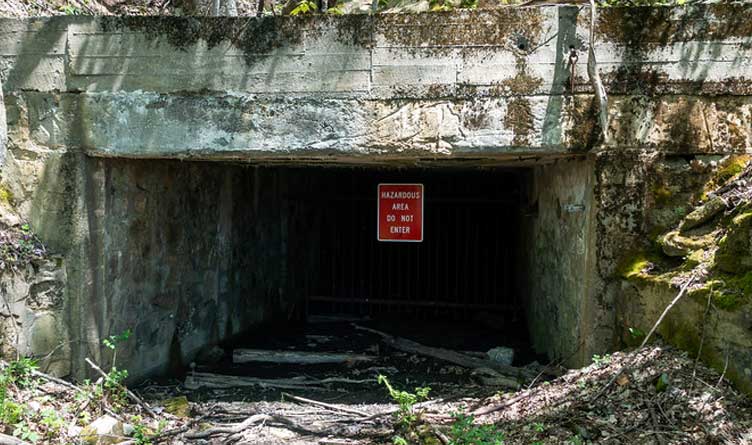Photo: Old Brushy Mountain Prison Coal Mine
Photo Credit: Jacob Ian Wall / CC
Published June 2, 2021
By Jon Styf [The Center Square contributor] –
The federal government’s Abandoned Mine Land Fee is set to expire in September, and the National Mining Association contends $12 billion already paid into the fund by mining companies to address issues at abandoned mine sites has been misused.
The fee was set up to pay for the reclamation of abandoned mines. In Tennessee, there are 14,000 acres of damaged land that would cost $126 million to reclaim, according to a report from Eric Dixon of the Ohio River Valley Institute.
Dixon’s report said 84% of the remaining damaged land nationally is in seven states: Pennsylvania, West Virginia, Ohio, Kentucky, Alabama, Virginia and Tennessee.
The Tennessee Land Reclamation Section has reclaimed 4,200 acres of land since 1981 at a cost of $44.5 million with $33 million of federal funds used on 3,000 of those acres.
Some of the most-recent Tennessee projects were a Huntsville Park 2018 Reclamation Project and the Jellico-Indian Mountain Road Waterline Replacement Project.
*** Click Here to Support Conservative Journalism in Tennessee. We can’t bring you articles like this without your support!***
Legislation to continue the fee was introduced by U.S. Rep. Liz Cheney, R-Wyoming. Wyoming U.S. Sens. John Barrasso and Cynthia Lummis reintroduced their legislation on the matter in May.
Both proposals would reduce the fees to current coal mining companies by 40% while continuing the fee for seven years.
“The AML fund plays a key role in ensuring that hazardous coal mining sites that have been abandoned are reclaimed by distributing funds to the sites that are deemed a priority,” Cheney said. “This bill will allow the AML program to continue while reducing the burden on coal miners, particularly in light of the significant hardships they have faced from the decline in demand for coal. We need to do what we can to ensure our coal industry can continue to provide good paying jobs and contribute to local and state economies.”
At issue is why more of the funds already haven’t been used to reclaim those lands. An estimated $9.4 billion has been spent from the fund, according to the National Mining Association, with only $3.6 billion of that spent on priority abandoned coal mined lands.
Dixon’s research showed only 27% of damaged land has been repaired with more than 850,000 standardized acres of damaged land remaining. Reclaiming all of that land is estimated to cost between $18.3 billion to $24.4 billion but will rise to between $21 billion and $33.6 billion by 2050.
“The unreclaimed sites threaten injury and death of residents, deter development, harm local ecosystems, and contribute to global warming by emitting greenhouse gases,” Dixon’s report said.
The NMA cited a 2017 report from the U.S. Department of Interior’s inspector general that said the lack of oversight from the national Office of Surface Mining has allowed states to divert those funds to non-coal mining issues, despite high-profile coal issues remaining, and the OSM’s inability to give accurate cost accounting for projects.
“When you consider the years that priority reclamation projects have languished while funds have been siphoned off for purposes not imagined under the scope of the program, there’s no doubt that the AML program is in need of reform,” said Rich Nolan, National Mining Association president and CEO. “The commonsense actions outlined in [Barrasso’s] bill to encourage program transparency, accountability and effectiveness, while better reflecting the realities of the market, coupled with President’s recent identification of the cleanup of abandoned mine lands as a priority, can help us chart a path forward to bipartisan partnership in achieving the program’s original purpose.”
The U.S. Senate bill would prioritize using the $2.2 billion remaining in the AML fund to reclaim the most environmentally hazardous land and allow for easier partnerships with local conservation groups and state and local governments on reclamation projects.
Dixon estimated if all of Tennessee’s damaged land was reclaimed, it could lead to 104 total jobs and 20 construction jobs.






One Response
Is there a map of the location and ownership of these properties?